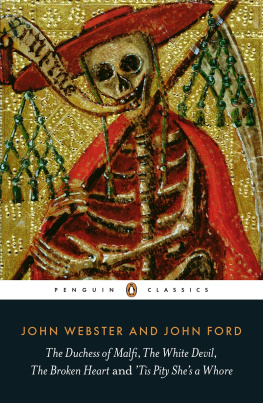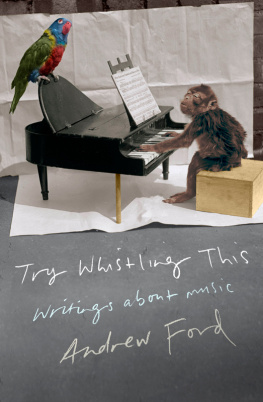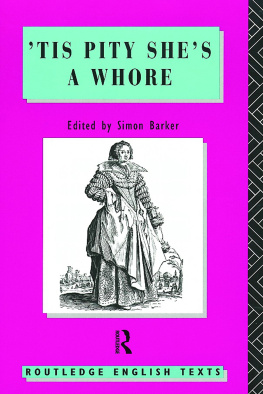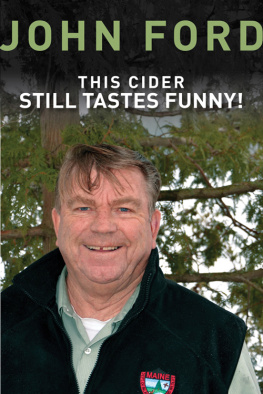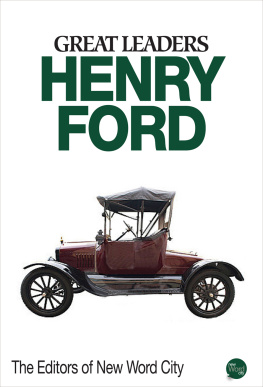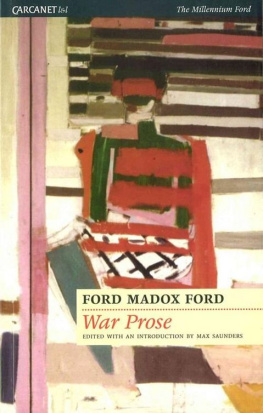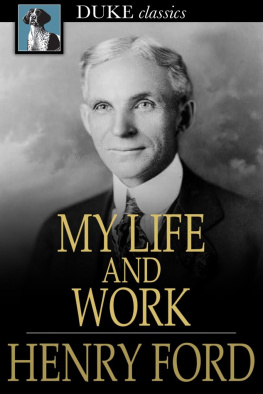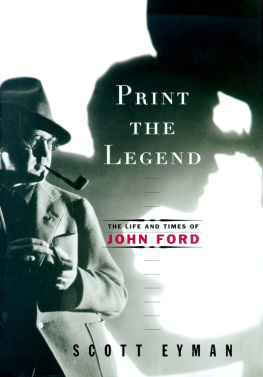SEARCHING FOR JOHN FORD
OTHER BOOKS BY JOSEPH MCBRIDE
Steven Spielberg: A Biography
What Ever Happened to Orson Welles?: A Portrait of an Independent Career
The Book of Movie Lists: An Offbeat, Provocative Collection
of the Best and Worst of Everything in Movies
High and Inside: An A-to-Z Guide to the Language of Baseball
Orson Welles
Frank Capra: Te Catastrophe of Success
Filmmakers on Filmmaking, Vols. I and II (editor)
Hawks on Hawks
Orson Welles: Actor and Director
Kirk Douglas
John Ford (with Michael Wilmington)
Focus on Howard Hawks (editor)
Persistence of Vision: A Collection of Film Criticism (editor)
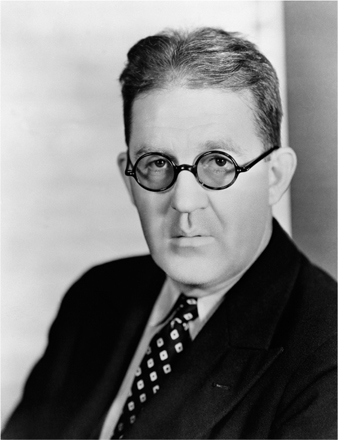
SEARCHING FOR
JOHN FORD
JOSEPH McBRIDE

www.upress.state.ms.us
The University Press of Mississippi is a member of the Association of American
University Presses.
Copyright 2001, 2011 by Joseph McBride
All rights reserved
Manufactured in the United States of America
Grateful acknowledgment is made to the following for permission to quote from published or unpublished material: The American Film Institute, for quotations from its documentary film Directed by John Ford (1971) and its television special The American Film Institutes Salute to John Ford (1973); Peter Bogdanovich, for quotations from his books John Ford (Movie Magazine Ltd., London, 1967, and University of California Press, 1968 and 1978 editions) and Allan Dwan: The Last Pioneer (Praeger, 1971), reprinted in Bogdanovichs collection Who the Devil Made It (Knopf, 1997), and for quotations from his documentary film Directed by John Ford (1971), from his articles The Autumn of John Ford, Esquire, April 1964 (reprinted in condensed form in Bogdanovichs collection Pieces of Time: Peter Bogdanovich on the Movies, Arbor House/Esquire, 1973), Th Respawnsibility of Bein J Jimmy Stewart, Esquire, July 1966 (reprinted in Pieces of Time), and The Cowboy Hero and the American West as Directed by John Ford, Esquire, December 1983, and from his program notes for A Tribute to John Ford (New Yorker Theatre, New York, 1963); President Richard M. Nixon for his essay Reflections on John Ford, January 6, 1988; Andrew Sarris, for quotations from his books Interviews with Film Directors (editor, Bobbs-Merrill, 1967), The American Cinema: Directors and Directions, 19291968 (E. P. Dutton, 1968), and The John Ford Movie Mystery (Indiana University Press, 1975); and Anthony Slide, for quotations from Anthony Slide and June Banker, Interview with Mary Ford ( Anthony Slide, 1977).
Book Design by Michelle McMillan
Frontispiece by Corbis, Inc.
First University Press of Mississippi printing 2011
Library of Congress Cataloging-in-Publication Data
McBride, Joseph, 1947
Searching for John Ford/Joseph McBride.
p. cm.
Originally published: New York : St. Martins Press, 2001.
Includes bibliographical references and index.
ISBN 978-1-60473-467-6 (pbk. : alk. paper)
ISBN 978-1-60473-468-3 (ebook) 1. Ford, John, 18941973. 2. Motion picture
producers and directorsUnited StatesBiography. I. Title.
PN1998.3.F65M38 2011
791.430233092dc22
[B] 2010024514
British Library Cataloging-in-Publication Data available
FOR RUTH OHARA
who urged me to write this book and gave me
invaluable help and advice at every stageeven
though she still doesnt like The Quiet Man
You say someones called me the greatest poet of
the Western saga. I am not a poet, and I dont
know what a Western saga is. I would say that is
horseshit.
JOHN FORD
INTRODUCTION
MY SEARCH FOR JOHN FORD
A man will search his heart and soul,
Go searchin way out there.
His peace of mind he knows hell find,
But where, O Lord, Lord, where?
THE THEME SONG FROM
THE SEARCHERS (1956)
THEY CALLED HIM Bull Feeney, the human battering ram. Broad-shouldered and rugged, John Martin Aloysius Feeney stood six feet tall and weighed 175 pounds, but the wary squint in his blue eyes made him always seem to be coming at you from a defensive crouch. His bluff manner had something strangely distant and dreamy about it. There was an unmistakable sensitivity in his melancholic eyes, at odds with his rough, often rowdy conduct on the football field in Portland, Maine. During his senior year, redheaded Jack Feeney was one of the mainstays of the Portland High Bulldogs, a squad that clawed its way to the 1913 state championship in tight, low-scoring games fought out on muddy playing fields. As a fullback and tackle, he was nicknamed Bull because of the way he would lower his leather helmet and ram his head into the opposing line, bulling his way toward the goal line or blocking for other ballcarriers with a reckless bravado that compensated for his dismal eyesight.
Off the field, Jack Feeney wore wireless glasses that gave him a solemn, priestlike gravitas. His father thought he would take Holy Orders. But this son of Irish immigrants was an erratic student with an uncertain future. Feeling the sting of being a mick in a Yankee-dominated New England seaport, he may have been taking the path of passive resistance, bred of a sense of not belonging. During classroom discussions he seemed more interested in sketching caricatures of his classmates and teachers, or heroic profiles of cowboys and Indians. The artistic side of his personality also began to emerge in stories he tried unsuccessfully to sell to magazines and in school essays that his admiring principal, William Jack, took home for safekeeping. The boy later remembered Mr. Jack as the typical Yankee schoolteacher: kindly, commiserative, at times tough; he had great faith in me, he told me I had tremendous potentialities.
When he put his pen or pencil to paper, or listened to Principal Jack lecturing on American history, Jack Feeney awoke from his habitual trancelike classroom state. His discovery that many of the citizen soldiers who fought in the American Revolution were Irish immigrants was a transforming moment, for it roused in him a sense of vital connection to American history and the nations heroic ideals. That understanding galvanized young Feeney s visual imagination of the American past and served to counterbalance his indignation over the social injustices he experienced as a first-generation Irish-American. Its easy to see that he became Bull Feeney partly out of a self-defensive need to create a pugnacious image in a school where ethnic differences often led to fistfights.
Later in life, after he changed his name to John Ford and became Hollywoods most celebrated filmmaker, the duality of his personality grew increasingly pronounced. Mary Astor, who starred for Ford in The Hurricane, described him as Very Irish, a dark personality, [with] a sensitivity which he did everything to conceal. As if deeply ashamed of the vulnerable, probing gaze with which he looked out onto the world, Ford hid his eyes behind dark glasses and, eventually, an eye patch that gave his face a forbidding, piratical appearance.
Look at the eyes, Ford replied when asked how one should watch a motion picture. He was giving us a clue about how to understand himself: The secret is peoples faces, their eye expression, their movements.
Next page

